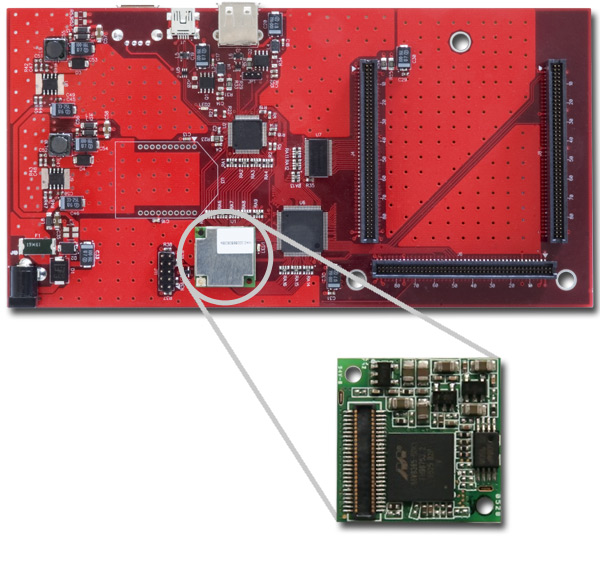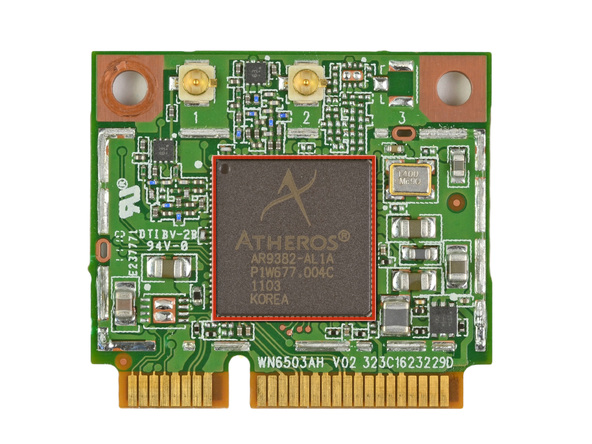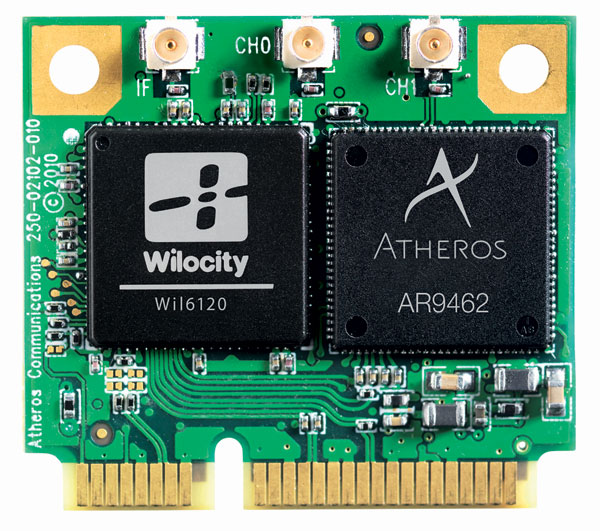Wireless communication is vital for mobile handheld devices. In our development of telecom mobile devices and electronics, we use the following wireless technologies:
- ZigBee (IEEE 802.15.4)
- Bluetooth (IEEE 802.15.1)
- Wi-Fi (IEEE 802.11)
- IrDA
- RFID
- GSM, CDMA
ZigBee (IEEE 802.15.4)
The main field of application of IEEE 802.15.4 (ZigBee) is means of communication between self-contained devices and equipment.
IEEE 802.15.4 standard specifies the parameters of the physical layer (PHY) and medium access control (MAC), offering support for different network topologies.
PHY key functions:
- Контроль энергопотребления и управление качеством звеньев
- Оценка каналов для более успешного сосуществования с сетями других беспроводных операторов.
MAC key functions:
- Specified automatic confirmation of packet delivery
- Data transfer at regular intervals
- Support for 128-bit AES functions.
If there is Wi-Fi equipment or a Bluetooth device within the coverage of a ZigBee device, their channels can be used as a tunnel for ZigBee traffic.
IEEE 802.15.4 mainly provides a short communications range (about 10 meters) and a bandwidth of up to 250 kbit / s. At this rate, data transfer occurs within 2.4 GHz frequency range. Low power consumption and data rate are due to a low-power coupling device. Other ranges available are 858 MHz (20 kbit / s) and 902 ... 928 MHz (40 kbit / s).
What is distinct about IEEE 802.15.4 (ZigBee) is that using these frequencies is license-free.
Bluetooth (IEEE 802.15.1)
Bluetooth technology is widely used in mobile handheld devices for information exchange within a radius of 10 to 100 meters: cell phones, headsets, wireless manipulators and keyboards.
Apart from its use in consumer electronics, Bluetooth is also utilized in embedded systems for industrial use. An example would be systems for local monitoring of remote objects (basic cell stations and electrical substations). Bluetooth technology is also developing in media and entertainment. For instance, it is applied in systems for transfer of advertising content in crowded places (supermarkets, shopping centers and expo shows).
Bluetooth devices are divided into three classes based on radiation power:
- Сlass 1 — power of up to 100 mW, range of up to 100 m
- Сlass 2 — power of up to 2.5 mW, range of up to 10 m
- Сlass 3 — power of up to 1 mW, range of up to 1 m
The stated values for Bluetooth range and transfer rate are based on ideal laboratory conditions. In practice, taking into account ambient noise, as well as protocol and transport costs, the technology yields lower values, which has been experimentally shown by Promwad experts.
There are several Bluetooth specifications: v1.0, v1.1, v1.2, v2.0, v2.1, v3.0, v4.0. The latest version of the Bluetooth specification (4.0) was adopted in 2010. It includes the following protocols:
- Classic Bluetooth
- High-speed Bluetooth
- Low-power Bluetooth
High-speed Bluetooth is based on Wi-Fi, while classic Bluetooth is based on the protocols of the previous Bluetooth specifications.
Bluetooth basic versions provide a data transfer rate of up to 723 kbit / s for unidirectional transfer and 433 kbit / s for bidirectional transfer. Bluetooth 2.0 features support for enhanced data rates (EDR) of up to 2 Mbit / s. Bluetooth 2.1 is fitted with improved support for power saving modes and helps set up a connection between devices much faster. Bluetooth v. 3.0 + HS specification was approved in 2009. It features support for data rates of up to 24 Mbit / s and added asymmetrical multiprocessing (AMP) as an alternative to MAC / PHY and a supplement to 802.11.
WiFi (IEEE 802.11)
Wi-Fi is the fastest of all popular wireless LAN technologies. Most deployed networks operate according to the IEEE 802.11n specification, which helps transfer data at a rate of up to 600 Mbit / s through MIMO technology (the use of multiple antennas that transmit and receive data to generate several spatial radio channels that are weakly correlated).
Wireless networks based on this technology can transmit large amounts of information and view videos of average quality. But for high-definition videos, Wi-Fi (IEEE 802.11) is not enough, so new wireless LAN standards are introduced, such as IEEE 802.11ac and IEEE 802.11ad.
IEEE 802.11ac (speed of up to 3.6 Gb / s) is a development on Wi-Fi for the 5 GHz band, which helps transfer high-resolution video streams, work with cloud services and hold video conferences over a wireless channel. A study conducted by ABI Research has shown that by 2013 a third of all Wi-Fi chips on the market will support 802.11ac and by 2014 most of them will have this feature.
IEEE 802.11ad (WiGig) is a new standard for wireless LANs operating in the 60 GHz band. It can transmit data at a speed of up to 7 Gb / s. In addition to audio\video transmission, it also helps operate network storage.
Bluetooth OEM modules, Bluez stack in Linux
The use of Bluetooth OEM modules of a commercial or industrial temperature range means rapid integration of Bluetooth technology into product development. Since Bluetooth operates in the same frequency range as Wi-Fi (IEEE802.11), many manufacturers of Bluetooth chipsets implement the option of simultaneous functioning with a Wi-Fi infrastructure (Bluetooth-Wi-Fi coexistence).
Linux, an operating system often used in developing embedded systems, supports Bluez, an open Bluetooth stack designed by Qualcomm.
At the Linux kernel level, Bluez includes the following modules:
- Basic Bluetooth (connection control and authorization)
- HCI (host control interface) driver which connects Bluetooth modules with USB, UART, SDIO, PCMCIA and CFIO interfaces
- SCO which supports audio / voice transmission via Bluetooth
- L2CAP support (logical link control and adaptation protocol), defines the basic protocol of data transfer between Bluetooth-enabled devices
- RFCOMM support which emulates RS-232 serial ports over Bluetooth
- BNEP (Bluetooth network encapsulation protocol) which emulates Ethernet over Bluetooth (connection control and authorization)
- CMTP module (CAPI message transport protocol)
- HIDP (human interface device protocol) which connects HID devices, such as keyboards, joysticks and mice, via Bluetooth.
OEM moduls
When designing the electronics of complex embedded systems, engineers often have to use third-party OEM modules. This is especially true for wireless technologies to be integrated into the final hardware and software platform.
When choosing a ready-made OEM module, its connection interface plays a crucial role. Here are the most common options:
- UART
- SPI
- USB
- SDIO
- CFIO
- PCI Express
UART is one of the simplest and most popular interfaces for connecting these modules. USB modules are popular because of the prevalence of USB on PCs, as well as in a variety of systems-on-chip.
The use of modules with CFIO or SDIO interfaces requires greater attention to software and hardware developers. SDIO modules meet the SecureDigital specification, while CFIO modules meet the CompactFlash + specification. The most common problems with the integration of such OEM modules into a final platform based on a microcontroller or system-on-chip are:
- Errata or anomalies in the SDIO controller integrated in the SoC
- Partial compliance with the waveform specifications
Modules can also be classified by industrial and mobile uses. In modules for industrial uses, key parameters include temperature range and industrial connection interface (usually UART or SPI). Due to the limitations of the connection interface, the module cannot fully utilize the bandwidth of the wireless connection. In modules for mobile uses, key parameters include power consumption, structural design and dimensions.
The USB and PCI Express interfaces are used for high-speed wireless technologies.
Promwad engineers possess considerable relevant experience in wireless module selection and integration into target device, based on the customer’s marketing and technical requirements. We have worked with the following vendors of semiconductor Wi-Fi solutions:
- Marvell: Libertas 88w8686, 88w8385; TOPDOG 88w8687
- Realtek: RTL8187, RTL8180
- Ralink: RT61, RT73, RT2571, RT2870, RT3090
- Atheros: AR5007UG (бывший zd1211b), ath5k, ath9k
- Texas Instruments: WL1271, WL1273
Let us discuss in greater detail several Wi-Fi-based OEM modules, as well as RF (radio frequency) modules:
OEM IEEE802.11b/g (WiFi) based on Marvell 88W8385 for mobile applications
- Interface: CFIO
- SIze: 20x20 mm
And it's usage in extension board WiFi-ZigBee-USB for processors Blackfin:

OEM IEEE802.11b/g (WiFi) based on Realtek RTL8187 for mobile applications
- Interface: USB
- SIze: 48x30 mm
OEM IEEE 802.11 a/b/g/n 2T2R MIMO (Wi-Fi) based on Atheros AR9382 for mobile applications
- Interface: PCI Express
- SIze: 26.8 x 29.85 mm (1/2 miniPCIe)
- Supported specifications: IEEE 802.11b, 802.11g, 802.11d, 802.11e, 802.11i, and 802.11n

OEM IEEE 802.11aс and IEEE 802.11ad (WiGig) based on the Atheros AR9462 / Wilocity Wil6120 for mobile applications
- Interface: PCI Express
- Size: 1/2 miniPCIe
- Frequency ranges: 60 GHz, 2.4 GHz and 5 GHz.

Specialized low-power RF modules
Low-power RF modules are a good solution for embedded systems where it is required to transmit small data chunks over a small distance using license-free radio frequency ranges of 433MHz, 868MHz and 2.4GHz.
Electronic devices sometimes require some kind of remote control like a remote car alarm key or remote control for a multimedia device. Data amounts and transfer rates are rather low in such situations, while power consumption is crucial. It makes no sense to use complicated wireless stacks like Bluetooth, ZigBee or Wi-Fi such remote control devices which do not require inter-operation with radio equipment by other manufacturers.
A typical RF solution consists of a radio frequency transceiver or transmitter, a low-power microcontroller, an antenna and a crystal oscillator. RF chip manufacturers often combine a transceiver and a microcontroller into a single chip package.
After Chipcon acquisition by Texas Instruments, RF solutions based on CC1xxx and CC2xxx by Texas Instruments have become quite popular in low-power, license-free RF applications:
- СС1010 — integrated transceiver with 8051 MCU core for operation in 300-1000 MHz frequency range. It has support for DES encryption, 3-channel 10-bit ADC and 32 Kbytes of Flash memory
- CC1020 — narrow-band transceiver of frequency ranges from 402 to 470 MHz and from 804 to 940 MHz
- СС1050 — narrow-band multi-channel transmitter operating in 300-1000 MHz range
- СС1070 — narrow-band multi-channel transmitter operating in 402-470 MHz and 804-940 MHz ranges
- СС1101 — multi-channel transceiver with data packet processing and an additional SPI port for connecting an external microcontroller. It operates in 300-348 MHz, 387-464 MHz and 779-928 MHz frequency ranges
- CC1110 — integrated transceiver with 8051 MCU core for operation in 300-348MHz, 391-464MHz and 782-928MHz ranges. It has up to 32 Kbytes of Flash, 21 GPIO, ADC and hardware accelerated AES-128 encryption
- CC1111 — integrated transceiver with 8051 MCU core for operation in 300-348MHz, 391-464MHz and 782-928MГц ranges. CC1111 has up to 32Kbytes of Flash memory, 8-channel ADC, hardware accelerated AES-128 encryption and support of USB and I2S interfaces
- CC2400 — transceiver for operation in 2400-2483MHz frequency range
- СС2510 — integrated transceiver with 8051 MCU core for operation in 2400-2483MHz range. CC2510 has up to 32 Kbytes of embedded Flash memory and support for AES-128 encryption
- CC2511 — integrated transceiver with 8051 MCU core for operation in 2400-2483 MHz range. It has up to 32 Kbytes of Flash memory and support for hardware AES-128 encryption, as well as support for a USB interface
- СС2550 — multi-channel transmitter for operation in 2400-2483MHz frequency range
Do you want to use wireless technologies in your projects?
Contact us, we will answer your questions.
